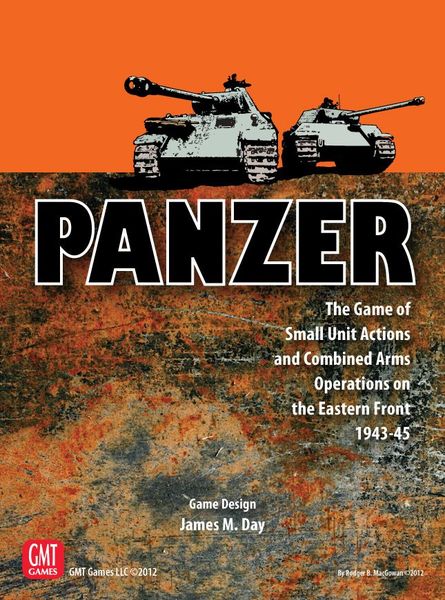Panzer: The Game of Small Unit Actions and Combined Arms Operations on the Eastern Front 1943-45 (2012) Board Game
Brief History and Background Information
Panzer: The Game of Small Unit Actions and Combined Arms Operations on the Eastern Front 1943-45 is a wargame that simulates tactical battles on the Eastern Front during World War II. Designed by a team of experienced game designers, this game captures the strategic challenges and intense combat of this historical period.
Game Components of Panzer: The Game of Small Unit Actions and Combined Arms Operations on the Eastern Front 1943-45
- Hexagon grid map representing the Eastern Front
- Unit counters representing various military forces
- Rulebook with detailed instructions
- Dice for combat resolution
- Player aids for reference during gameplay
How To Setup Panzer: The Game of Small Unit Actions and Combined Arms Operations on the Eastern Front 1943-45
- Place the hexagon grid map on a flat surface.
- Place the unit counters on their designated starting locations.
- Each player picks a side and familiarizes themselves with the rules.
- Roll to determine the starting player.
- Begin the game!
Gameplay Mechanics and Game Objective
Players take turns moving their units, engaging in combat, and trying to achieve specific objectives based on historical scenarios. The game uses a hexagon grid and line of sight mechanics to simulate realistic battlefield tactics. The objective is to outmaneuver and defeat the opponent’s forces.
Player Experience
Pros:
- Immersive gameplay that captures the essence of World War II battles
- Varied scenarios offer replayability
- Strategic depth and complexity keep players engaged
- Detailed rulebook provides clear guidance
Cons:
- Steep learning curve for new players
- Lengthy playtime may not be suitable for casual gamers
- Requires dedication to master the intricacies of the game mechanics
Personal Thoughts on Panzer: The Game of Small Unit Actions and Combined Arms Operations on the Eastern Front 1943-45
Panzer offers a deep and rewarding experience for wargame enthusiasts who enjoy historical simulations. The attention to detail in the game design and components is commendable, making each playthrough feel authentic. However, the complexity of the game may deter casual gamers looking for a more straightforward experience. Overall, Panzer is a worthwhile investment for those interested in World War II wargaming and are willing to dedicate time to learn its mechanics.
Game Components
How To Setup Panzer
To set up the game, players start by deploying their units on the mapboard according to the scenario being played. Each unit is represented by a counter, and the data cards provide the necessary statistics and rules for each unit. The mapboards are geomorphic, allowing for various battlefield configurations. Players also need to set up their command and control elements, including any optional rules they choose to include.
Gameplay Mechanics and Game Objective
Player Experience
**Panzer** offers a highly immersive and detailed gaming experience, especially suited for those interested in WWII tactical combat. The game is designed to be comprehensive yet quick to play, with a system that allows players to tailor the complexity to their preferences. The game includes basic, advanced, and optional rules, making it accessible to both new and experienced players.
Pros
Cons
Personal Thoughts on Panzer
**Panzer** is ideal for enthusiasts of WWII tactical combat and those who appreciate detailed, realistic wargaming. It is particularly suited for players who enjoy complex rules and are willing to invest the time to learn and master the game. While it may not be the best fit for casual gamers due to its complexity, it offers a deeply rewarding experience for those who enjoy strategic depth and historical accuracy.
We are supported by our audience. When you purchase through links on our site, we may earn an affiliate commission, at no extra cost for you. Learn more.

